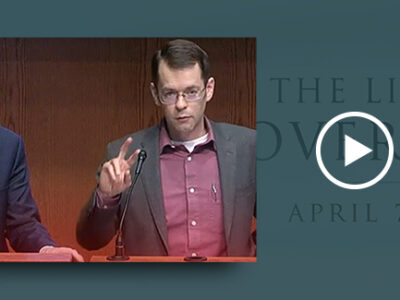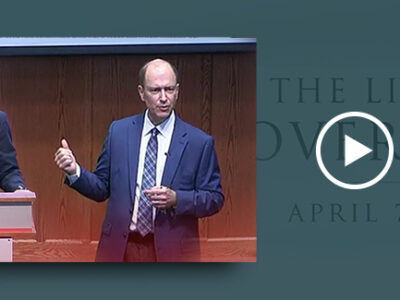Last Thursday, President-elect Barack Obama delivered a major speech on the economy. I didn’t know if it had that legendary tingling effect on its listeners, but reading the text in black and white, it reads like a manifesto on central planning. Obama’s faith in Big Government is unmistakable: “Only government can provide the short-term boost necessary to lift us from a recession this deep and severe. Only government can break the vicious cycles that are crippling our economy.”
Obama largely ignored government’s central role in causing the current crisis—totally ignoring the rampant government meddling via Fannie Mae, Freddie Mac, inflationary policies by Uncle Sam’s monetary meddlers at the Federal Reserve, Community Reinvestment Act regulators, and other interventionists. He did concede that, “Politicians spent taxpayer money without wisdom or discipline.” He went on to declare, “Our government has already spent a good deal of money, but we haven’t yet seen that translate into more jobs or higher incomes or renewed confidence in our economy. That’s why the American Recovery and Reinvestment Plan won’t just throw money at our problems—we’ll invest in what works.” He went on to underscore the need to make “smart investments” and to avoid spending money on “pet projects.”
May I ask: Why are other politicians’ programs “pet projects,” but President-elect Obama’s preferred programs are not? How can the incoming President know if his projects will be “smart investments,” since they will take place outside of the profit-and-loss test of the marketplace? How can you know the future and tell us “what works’” How can Obama believe that he knows what is best for society, when no other central planner has ever been able to solve that riddle?
The contradictions in Obama’s address were breathtaking.
“Government at every level will have to tighten its belt,” he solemnly intoned, while requesting massive increases in federal spending. Obama acknowledged that taxpayer dollars have been spent “without discipline,” but what is disciplined about trillion-dollar deficits? How can we get “our fiscal house in order” through floods of red ink?
Some may think that massive deficits might be a worthwhile tradeoff—placing a heavier financial burden on the future in exchange for Obama programs that “immediately jumpstart job creation and long-term growth.” History, however, shows Obama’s promise to be, well, unpromising. Sure, the President-elect’s plan will create jobs for many Americans. Put a trillion dollars in my hands, and I could employ a lot of people, too. But overall employment would stagnate. Roosevelt’s New Deal created many jobs, yet the unemployment rate never fell below 14 percent during his first eight years as president. This is because government jobs are what economists call “acatallactic”—that is, they are outside the economic marketplace. That’s the place where workers have to produce what people in society most urgently want in order for the people’s wealth to increase. Although government jobs may meet the objectives of central planners, they cripple overall employment. The larger the government programs, the more scarce resources (most importantly, capital) are diverted from the private sector into the public sector, which is inherently uneconomic and inefficient.
Rather than repeating the colossal mistakes of the New Deal, Obama should consider policies that have been shown to work. The recession of 1920-21 was the most severe deflationary episode of the last century, yet it was followed by an early and strong recovery. The difference between this relatively brief downturn and the Great Depression, which lasted from 1929 to 1941, was that government intervention was minimal and markets were allowed to adjust.
Employment is first and foremost a cost phenomenon—that is, there will be a demand for labor at the right price. When consumer prices fell in 1920, wages quickly adjusted downward, too, which resulted in a rapid recovery of output and employment, with industrial production increasing a whopping 63 percent in only 22 months. During the early 1920s, under the leadership of Treasury Secretary Andrew Mellon, federal spending was cut almost in half. During the New Deal, federal spending and government deficits soared. It is clear which course of action produced better results.
President-elect Obama appealed to us to abandon “the worn-out dogmas of the past.” There is no position more dogmatic than clinging to the unjustified belief that “only government” can restore prosperity to America. He said, “We can restore opportunity and prosperity.” By this I wish he meant that he would give the private sector the opportunity to create the high levels of prosperity that only free markets can produce.
The President-elect is right: “It is time to finally change the ways of Washington so that we can set a new and better course for America.” Yes, let’s change from the broken paradigm of heavy government intervention and embark on the time-tested and better course of freedom and free enterprise.




